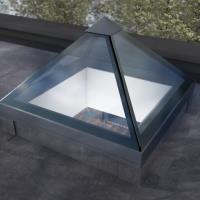 Add My Company
Add My Company
Sign In
Benefits of Natural Daylight
22-05-2015

Natural daylight is a topic frequently discussed by designers and researchers alike in relation to energy saving, aesthetic and health benefits.
As well as increased daylight being associated with energy efficiency, natural light also promotes wellbeing and performance levels.
These benefits are reflected through a range of internal environments. In the education sector daylight improves student performance and concentration levels, whilst natural light aids the healing process in the healthcare sector. Daylight in public buildings such as leisure facilities have also recognised the popularity of sunrooms in the home, and have replicated this accordingly. In addition the retail sector has seen an increase in sales due to effective daylight implementation.
Daylight design through rooflighting
Glass rooflights provide a fantastic solution for filtering natural daylight into buildings; their clear or translucent structure, depending on application, are designed for both flat and low-pitched roofs in order to significantly improve the building environment.
The way in which daylight design is incorporated into any given project will be determined by the building type and usage. Whilst vertical glazing may be appropriate for smaller buildings that have areas within 6m of a window, larger buildings will need rooflighting or a combination of both, to provide the appropriate lighting qualities.
Regardless of size or space, rooflights can be designed to provide the exact amount, type and distribution of natural daylight required for any given project.
Direct or diffused lighting?
Rooflights can provide both direct and diffused lighting depending on project requirements.
Direct lighting passes through the rooflight without disruption or interference; this means that strong light is focused on a given area. Whilst this may be appropriate where particularly strong light is needed, it can also result in shadow and glare.
Polycarbonate and glass are both materials that provide direct light.
Diffused lighting is used to give a much more even distribution of light; where the project requirement is for ambient lighting over a large area, diffused light reduces glare and eliminates harsh shadows.
Materials such as GRP, solid and multi-wall polycarbonate and glass can all be specified to provide diffused light.
In order to ensure that the rooflight design is sufficient for all likely future uses, it is essential that designers consider daylight levels and building type in order to prevent issues such as overheating. Generally, most single skin rooflight materials will have a light transmission of 80-90%, whilst double skin will have 70-75%.
Reducing energy use and cost
As previously mentioned, reducing the amount of artificial lighting used and maximising natural daylight hugely improves cost and energy savings.
Electric lights are powered by burning fossil fuels and are therefore carbon inefficient, whereas natural daylight is completely free, provides useful solar gain and contributes to a pleasant environment.
Therefore, when used in conjunction with reduced or automatic lighting controls, rooflights can have a major impact on the overall energy consumption of a building and cut down on energy costs.
Overall, rooflights provide a pleasant, healthy way of incorporating natural daylight into both public and private spaces, whilst contributing towards the Government’s target to reduce carbon emissions.
Despite a huge variety of rooflights readily available in today’s marketplace, choosing a NARM member rooflight company is your assurance for compliance.
To read more on using rooflights for natural daylight design, view the latest document by NARM here.
For more information on Benefits of Natural Daylight talk to rooflights.com
Enquire Now
More Case Studies & Blogs
List your company on FindTheNeedle.

